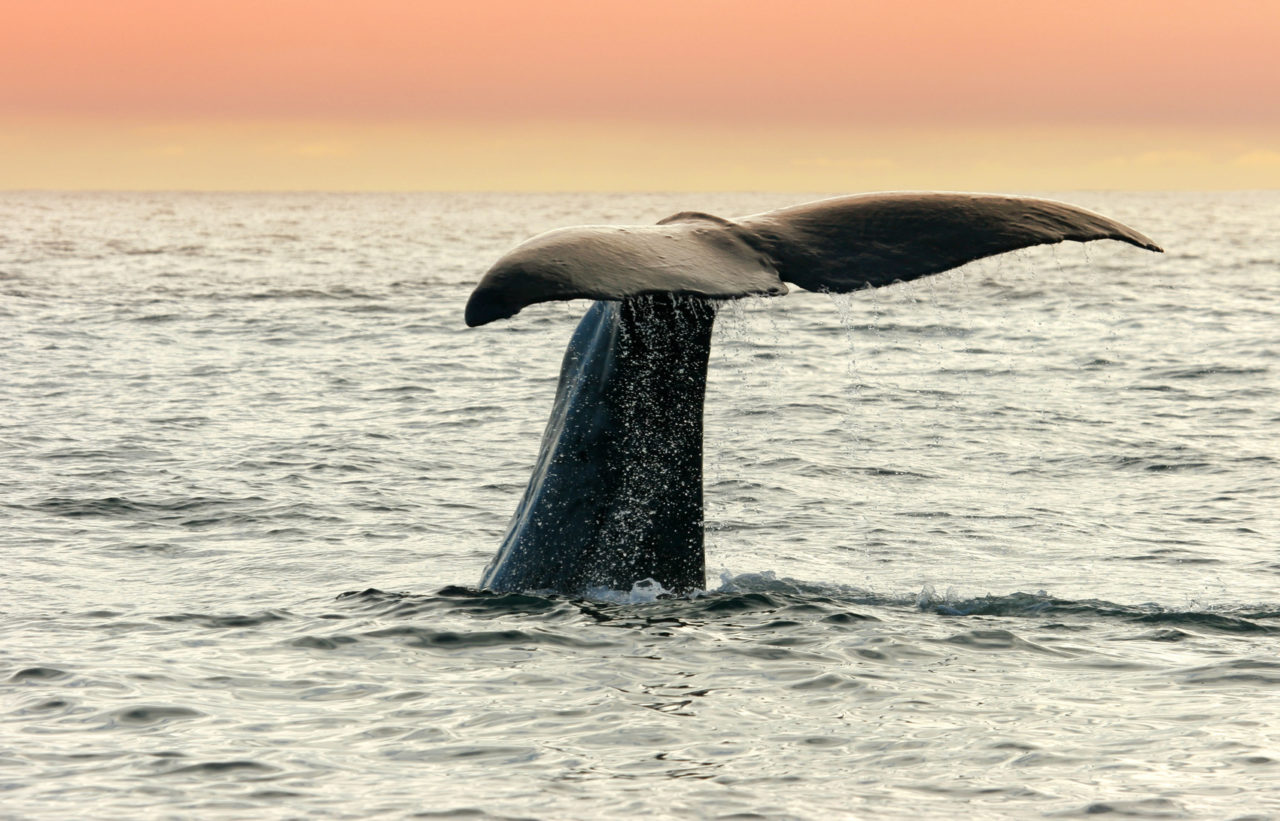Not a Fluke: Why These Whales are Losing Their Tails
When you think of a whale, you picture their signature move—breaching the ocean’s surface, catching air and then plopping back down with a splash, crescendoed by the smack of their powerful flukes. In 1985, Alisa Schulman-Janiger, whale biologist in charge of the American Cetacean Society’s Gray Whale Census and Behavior Project, was left speechless when she caught something rather peculiar about a pod of gray whales while they took their regular jumps. Rather than the usual tail flap capping off their acrobatic leaps, she saw instead, an unsightly stump. These whales had no tails.
It’s unlikely the disfigurement was caused by aggressive killer whales, or an accidental run-in with a shipping vessel. Instead, the cause is human related. When whales venture into the mess of fishing gear and other garbage we leave behind, the lines wrap and coil around the tails and cut off circulation to the fluke, where it dies and then falls away eventually. When a whale is without the end of their tail, or “fluke,” they lose most of their ability to feed. Instead, they’re forced to use their finned backside to “push” their bodies through the water and across the ocean bottom while filtering small crabs, lobster, krill and shrimp into their mouths.
Another grim truth about these tailless whales, according to Justin Viezbecke of the NOAA, is that they will probably die due to their brutal injury. And, since mother whales can’t fend off predators hunting their young, their increasing (but still vulnerable) numbers could be threatened. Especially since travelling the incredibly long distances during migration to mating grounds is now a titanic feat when the whale is without its greatest tool.
In the years since Schulman-Janiger’s observations, several more whales without tails have popped up; and now in 2018, as many as five have been documented recently heading north along the coast of California. This rise in sightings is setting off alarm bells in the scientific community, but there’s hope still for solutions to this problem.
It’s unclear how whales become entangled, or at what point in their travels it’s happening. The good news is that it is possible to free them from this trap—a reported six out of 31 entangled whales were saved in 2017, and sometimes they even get out without the help of humans. The real issue is finding a way to solve the problem for good. Thankfully, many large scale fishing companies are trying to cut back on net usage, instead using cages along the ocean floor to avoid entanglement altogether.
